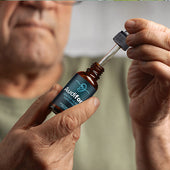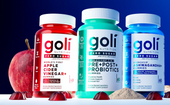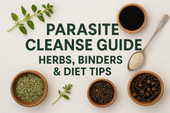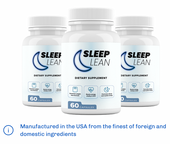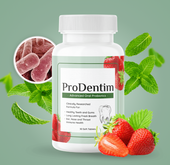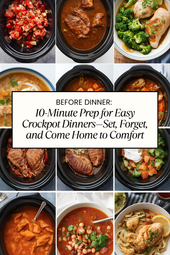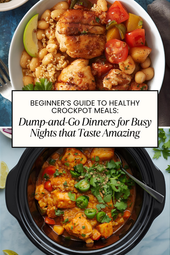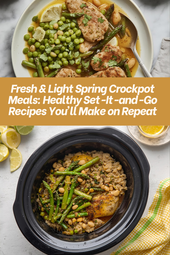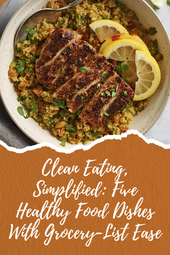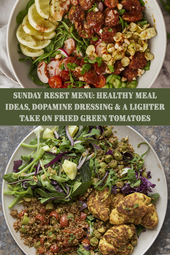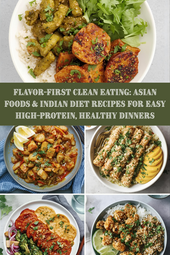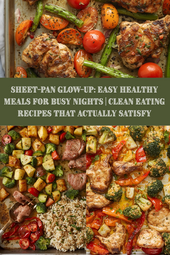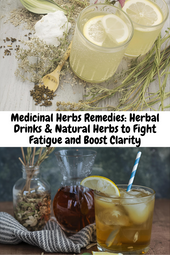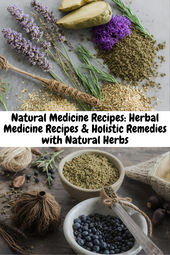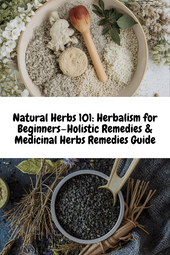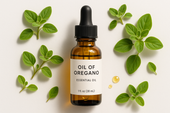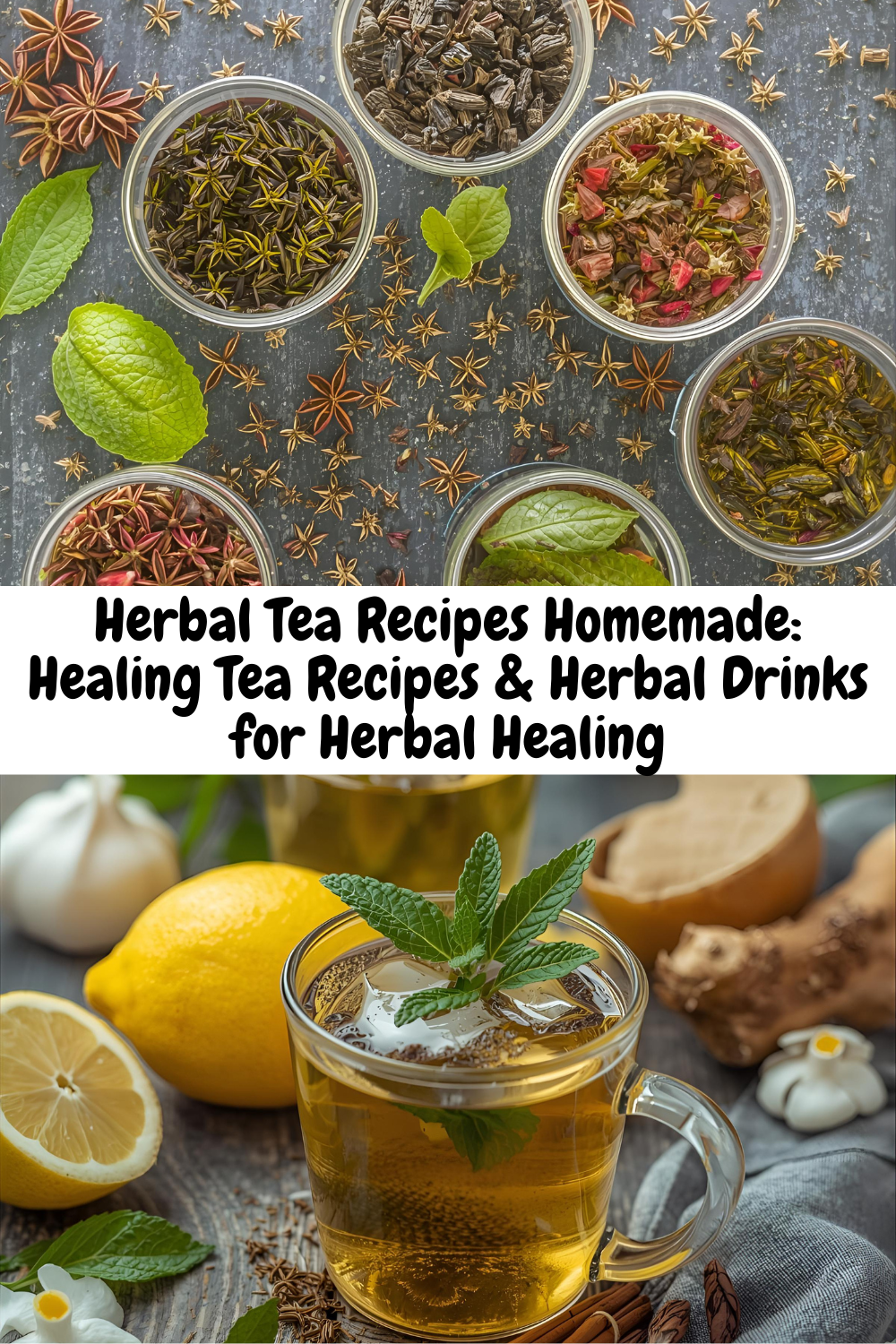
Herbal Tea Recipes Homemade: Healing Tea Recipes & Herbal Drinks for Herbal Healing
Share
Simple, soothing blends for calm, focus, digestion, and steady energy
Disclaimer: This content is educational and not a substitute for medical advice. Consult your healthcare provider before using herbs, especially if you are pregnant, nursing, on medication, or preparing remedies for children.
Why Homemade Herbal Tea Works
Homemade herbal teas give you control over quality, flavor, and function. When you brew at home, you decide the blend, the steep time, and the strength, which means you can tailor each cup to your mood and your body’s needs. The goal is not to chase quick fixes but to create small, reliable rituals that bring relaxation, clarity, and balance to your day. A warm mug can ease the transition between tasks, calm the nervous system at night, or provide gentle, steady energy without caffeine jitters. Because you are working with whole plant materials rather than heavily processed concentrates, you also avoid many added sugars, artificial flavors, and stabilizers. This is herbal healing in its simplest, most approachable form.
How to Get Reliable Results
Consistency begins with good ingredients and mindful technique. Choose reputable herb sources and store them in airtight containers away from heat and light so their aroma and color remain vibrant. Start with water just off the boil for most leaves and flowers, then adjust the temperature if a blend becomes too bitter or too flat. Steep times are guidelines rather than strict rules; taste at the midpoint and again near the end so you learn how the flavor opens and softens. If you are using honey, add it when the liquid is warm rather than boiling hot to preserve its delicate aromatics. Refrigerate any leftovers promptly in a clean jar, and label with the blend name and date so you remember what is fresh. As you repeat the same blends over a week or two, take a moment to note how your body responds. Herbalism is a relationship, and your notes become a map.

Choosing Herbs and Balancing Flavors
A beginner’s tea cupboard does not require dozens of jars. A few versatile staples can create many profiles. Chamomile offers a mellow, apple-like sweetness that takes the edge off long days. Lemon balm brings gentle brightness and a soft lift without caffeine. Lavender is potent and floral, so a pinch goes a long way and adds a calm, aromatic top note. Ginger is warm and assertive and pairs well with citrus when digestion needs a nudge. Peppermint sharpens the senses and cools a heavy meal or a sluggish afternoon. Nettle is mineral-rich and earthy and shines in long infusions for steady energy. Hibiscus and rosehip create a tart, ruby base that works wonderfully hot or iced. When building blends, think like a cook. Choose a base herb for body, a support herb for function, and a small accent for aroma. If a cup tastes flat, add a slice of lemon. If it is too sharp, a touch of honey or a splash of apple juice can soften the edges.
Kitchen Setup without Special Tools
You can make excellent tea with what you already have. A kettle or saucepan for heating water, a heatproof jar or teapot for steeping, a fine mesh strainer, and a mug are enough. If you wish to scale up, a one-quart mason jar works beautifully for overnight infusions you can sip all day. For iced teas, brew a concentrate and pour it over plenty of ice to keep flavors bright without dilution. Rinse strainers and jars promptly so delicate aromatics do not linger from one blend to the next.
Recipe 1: Ginger Lemon Digestive Soothe Tea
This bright and comforting tea is the cup you reach for after a heavy meal or a stressful meeting. The warmth of ginger and the citrus of lemon support a relaxed gut and a refreshed palate. To make two cups, slice one to two tablespoons of fresh ginger and simmer it in two cups of water for about ten minutes. Turn off the heat, add two or three thin slices of lemon, cover the pot, and let it stand for two to three minutes so the citrus oils bloom without turning bitter. Strain into mugs, taste, and add a touch of honey only if you need it. If you plan to store a portion, refrigerate it promptly and drink within twenty-four hours. For a cooler weather variation, add a small piece of cinnamon stick during the simmer for a cozy background note. For a summer option, chill the tea and serve over ice with a squeeze of fresh lemon.
Recipe 2: Sleepy Moon Bedtime Tea with Chamomile, Lemon Balm, and Lavender
Evenings improve when you ritualize the wind-down. This floral blend settles a busy mind while remaining gentle enough for regular use. To brew two cups, combine one tablespoon of chamomile flowers with one tablespoon of lemon balm leaf and a half to one teaspoon of lavender buds in a teapot or heatproof jar. Pour in two cups of water just off the boil, cover to trap those delicate aromatics, and steep for ten to fifteen minutes. Strain and sip warm. The flavor is soft and honeyed, so sweetener is often unnecessary. If you wish to nudge the blend toward minty brightness, replace the lemon balm with peppermint. To reinforce the bedtime signal, keep your lighting low and devices away while you drink. Store any leftover tea in the refrigerator for up to twenty-four hours and rewarm gently on the stove rather than boiling.
Recipe 3: Focus Mint and Rosemary Clarity Tea
When you need a study partner in a mug, peppermint delivers lift while rosemary contributes a grounding, resinous clarity. For two cups, add one tablespoon of peppermint and a half teaspoon of lightly crushed rosemary to a teapot. Pour in two cups of water just off the boil, cover, and steep for seven to ten minutes. Taste at the seven-minute mark and continue only if you want more rosemary depth. Strain and enjoy warm with a slice of lemon if you like. If a cooler profile suits you, brew the tea as a concentrate with a little less water, then pour over ice to keep flavors crisp. The peppermint keeps your palate alert, while rosemary provides a steady, focused base that pairs well with long writing or problem-solving sessions. Refrigerate leftovers for up to a day and serve chilled for a refreshing afternoon reset.
Recipe 4: Radiant Hibiscus Rosehip Citrus Tea
Sometimes the body wants a tart, ruby drink that feels as energizing as it looks. Hibiscus and rosehip combine to create a vitamin-rich base that is equally delicious hot or iced. To make three cups, place one tablespoon of hibiscus petals, one tablespoon of crushed rosehips, and a teaspoon of dried orange peel into a heatproof jar. Pour in three cups of water just off the boil, cover, and steep for fifteen minutes. Strain carefully, then taste. A small amount of honey or maple syrup can soften the tartness, or you can leave it unsweetened and pour over ice with a slice of orange. The color alone makes this a crowd favorite for gatherings. Stored in the refrigerator, it keeps its brightness for up to forty-eight hours. If you want a spiced version for colder weather, add a tiny piece of cinnamon or a clove during the steep and remove it promptly so the spice does not dominate.
Recipe 5: Mineral Daily Nettle Mint Iced Infusion
When you need steady energy without caffeine, nettle shines in a long steep. Its mineral content gives a sense of nourishment that is more whisper than shout. For one quart, place one cup of dried nettle leaf in a clean jar and add one to two tablespoons of peppermint if you prefer a cooler finish. Fill the jar with water just off the boil, cap it, and let it steep for four to eight hours, or overnight in the refrigerator for a smoother result. Strain thoroughly, chill, and drink within thirty-six hours. The flavor is earthy with a hint of green, and the peppermint adds lift without sweetness. If you prefer a brighter profile, add a slice of lemon to the jar after straining. Many people find this infusion supportive during demanding weeks because it feels nourishing and hydrating rather than stimulating.
Adjusting Strength, Sweetness, and Temperature
Every palate is different, so think of these recipes as starting points rather than strict rules. If a tea tastes weak, lengthen the steep slightly or add a small amount of herb the next time you brew. If it feels too strong, shorten the steep or dilute with hot water until you find a gentler balance. Sweetness is not mandatory; in many cases a squeeze of lemon adds more interest than sugar ever could. Honey brings a rounded, floral note, while maple adds depth; both work best when the tea is warm, not boiling. Temperature changes the experience as much as flavor does. Ginger lemon is clarifying when hot and refreshing when iced. Hibiscus rosehip becomes a summer classic over ice, while the same blend can be soothing and deeply colored when served hot in winter.
Sanitation, Storage, and Safety
Clean tools make better tea. Wash strainers, jars, and spoons right after use and allow them to dry thoroughly before the next batch. Label jars with the blend name and date so you always know what is fresh. Most hot-steeped teas keep for about twenty-four to forty-eight hours in the refrigerator if covered, while long infusions such as nettle are best within about thirty-six hours for peak flavor. Avoid giving honey to children under one year old. If you have known allergies or take medications, consult a professional reference or your clinician, since some herbs can interact with specific conditions or prescriptions. Start with small amounts and pay attention to how you feel.
How to Use These Teas in a Daily Rhythm
The most powerful benefit of homemade herbal tea is not any single ingredient but the routine itself. Choose one moment you can repeat. A ginger lemon cup after lunch can become a gentle digestive ritual. A peppermint rosemary mug at the start of deep work can signal the brain to show up. A chamomile lemon balm blend an hour before bed can invite sleep consistently. A quart of nettle infusion in the fridge can replace an afternoon soda or energy drink. The repetition is what teaches the body what to expect, and over time these signals become reliable anchors.
Frequently Asked Questions
People often ask how strong to make their tea. A helpful approach is to begin mildly and adjust the steep by taste. When in doubt, seven to fifteen minutes captures most of the benefits of delicate leaves and flowers, while roots and peels can handle gentle simmering or longer steeps. Another common question is whether blends can be combined. The answer is yes, and two or three herbs are usually enough to build a focused, harmonious cup. Many wonder about caffeine. All recipes here are naturally caffeine-free unless you choose to blend with green or black tea for flavor. Storage is another concern. As a rule, keep teas covered in the refrigerator and enjoy them within a day or two for best aroma and color.
Final Thoughts and Next Steps
Homemade herbal tea is a small practice with a meaningful impact. You learn to listen to your body, you gain confidence in the kitchen, and you create a handful of recipes that can support you through varied seasons of life. Keep the staples on hand, brew a little more than you need, and make it easy to choose a nourishing option when you are busy. In time you will develop personal favorites and quiet rituals that make your days feel steadier and more intentional.
Ginger Lemon Digestive Soothe Tea
Bright, warming support after meals or stressful days.
Yield: 2 cups | Prep: 5 min | Simmer: 10 min | Total: ~15 min
Ingredients
- 1–2 Tbsp fresh ginger, sliced
- 2–3 thin slices fresh lemon
- 2 cups water
- Honey to taste (optional)
Directions
- Add ginger and water to a small pot; simmer gently for 10 minutes.
- Turn off heat, add lemon slices, cover 2–3 minutes.
- Strain into mugs; sweeten if desired and serve warm.
Storage: Refrigerate up to 24 hours; rewarm gently.
Note: For a cozy twist, add a small piece of cinnamon during the simmer.
Sleepy Moon Bedtime Tea (Chamomile • Lemon Balm • Lavender)
Floral, calming blend to ease into restful sleep.
Yield: 2 cups | Prep: 5 min | Steep: 10–15 min | Total: ~15 min
Ingredients
- 1 Tbsp chamomile flowers
- 1 Tbsp lemon balm leaf
- ½–1 tsp lavender buds
- 2 cups water, just off the boil
- Honey (optional)
Directions
- Place herbs in a teapot or heatproof jar.
- Pour in hot water, cover, and steep 10–15 minutes.
- Strain; sip warm. Sweeten only if desired.
Storage: Best fresh; refrigerate up to 24 hours.
Variation: Swap lemon balm for peppermint for a cooler profile.
Focus Mint & Rosemary Clarity Tea
Cooling mint with aromatic rosemary for study or deep work.
Yield: 2 cups | Prep: 5 min | Steep: 7–10 min | Total: ~12 min
Ingredients
- 1 Tbsp peppermint leaf
- ½ tsp rosemary, lightly crushed
- 2 cups water, just off the boil
- Lemon slice (optional)
Directions
- Add peppermint and rosemary to a teapot.
- Cover with hot water; steep 7–10 minutes, tasting at 7 minutes.
- Strain; add lemon if desired. Serve warm or over ice.
Storage: Refrigerate up to 24 hours; excellent iced.
Note: For a crisper iced version, brew slightly stronger, then pour over ice.
Radiant Hibiscus Rosehip Citrus Tea
Tart, vitamin-rich ruby tea—delicious hot or iced.
Yield: 3 cups | Prep: 5 min | Steep: 15 min | Total: ~20 min
Ingredients
- 1 Tbsp hibiscus petals
- 1 Tbsp crushed rosehips
- 1 tsp dried orange peel (or a few fresh strips)
- 3 cups water, just off the boil
- Honey or maple to taste (optional)
Directions
- Place herbs in a heatproof jar; add hot water and cover.
- Steep 15 minutes; strain carefully.
- Sweeten lightly if desired; serve warm or over ice with an orange slice.
Storage: Refrigerate up to 48 hours.
Variation: Add a tiny piece of cinnamon or clove while steeping; remove promptly.
Mineral Daily Nettle & Mint Iced Infusion
Nourishing, mineral-rich infusion for steady, caffeine-free energy.
Yield: 1 quart | Prep: 5 min | Steep: 4–8 hrs (or overnight) | Total: hands-off
Ingredients
- 1 cup dried nettle leaf
- 1–2 Tbsp peppermint (optional, for flavor)
- 1 quart water, just off the boil
- Lemon slice (optional)
Directions
- Add nettle and peppermint to a clean quart jar.
- Fill with hot water; cap and steep 4–8 hours or overnight (refrigerated for a smoother profile).
- Strain thoroughly; chill and serve over ice. Add lemon if desired.
Storage: Refrigerate and enjoy within 36 hours for best flavor.
Note: Earthy and nourishing; peppermint adds lift without sweetness.





